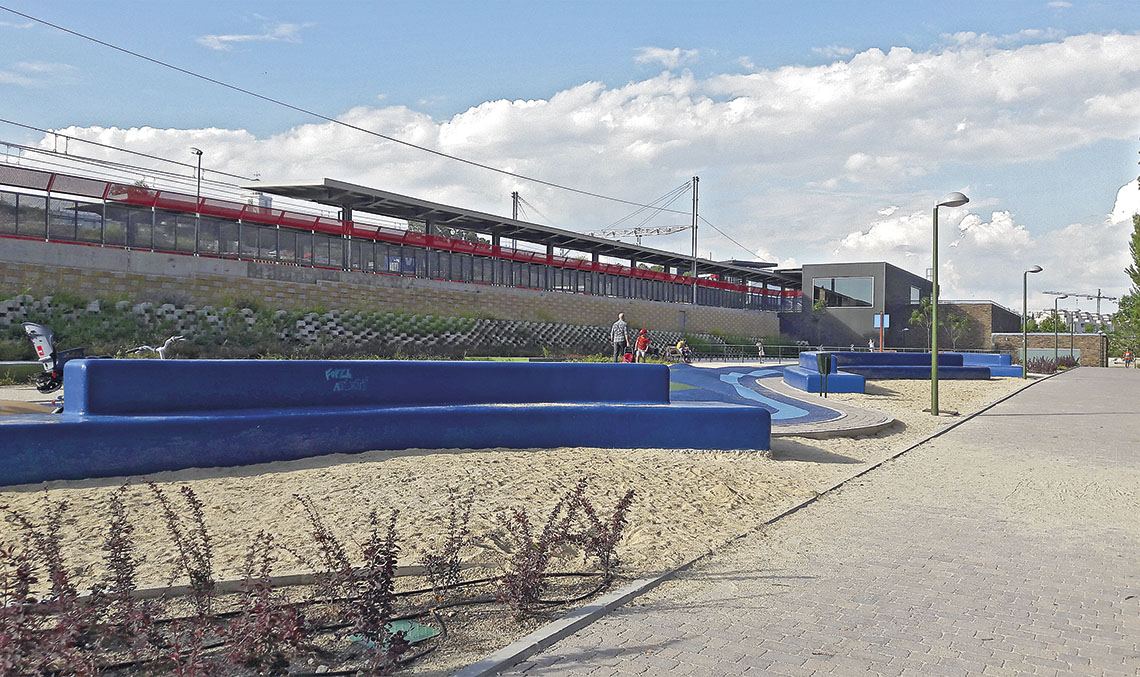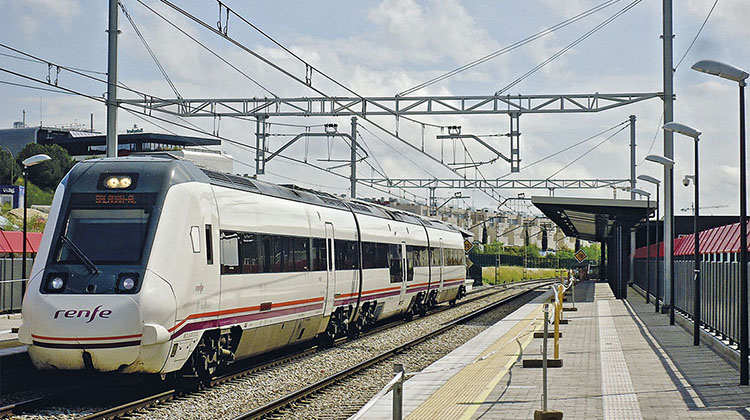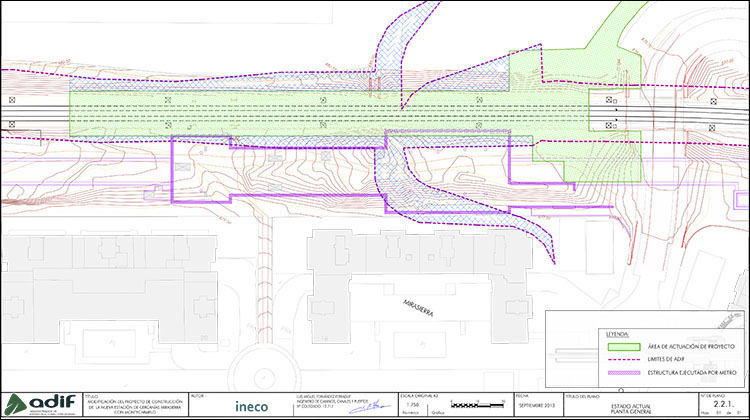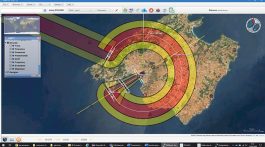This simple and comfortable infrastructure brings residents of the district of Mirasierra in Madrid closer to the city centre in a matter of minutes. The new facility makes use of the Commuter line passing between Pitis and Ramón y Cajal stations, such that the station –with estimated traffic of almost 10,000 passengers– will be connected to Commuter lines C-7 and C-8. The area around the station comprises a series of residential buildings, green areas and sports facilities. The halt will service the district of Fuencarral-El Pardo with over 220,000 inhabitants and will improve links with the southeast thanks to its connection with line 9 of the metro.
This simple and comfortable infrastructure brings residents of the Mirasierra district closer to the centre of Madrid in a matter of minutes
The spaces between the Metro and the Commuter train areas are connected via a main lobby that is the main entrance or exit to the station. On the upper floor there is a waiting room for passengers. The floor underneath the railway lines contains a hall with access control, a customer service office, public toilets, platform access by stairs and escalator, and lifts, as well as rooms for cleaning services. In the station itself, Renfe and Adif also have several rooms for their facilities.
The station has two new passenger buildings on both sides of the platform, connected by an inner walkway. It also has special facilities including the execution of a new processing plant.
Platforms
The platforms are 210 metres long and five metres wide with ramps at the end. A marquee is placed on each platform using pieces covering a total length of 84 metres.
Gardens
Around the station there are paved and garden areas and a children’s playground, as well as pedestrian walkways between Montecarmelo and Mirasierra.
Entrances and exits
The station has a limited use access for maintenance and emergency vehicles on the southern road in the Montecarmelo district, and a pedestrian access, also on the Montecarmelo side, with stairs and a ramp, complying with accessibility standards.
Ineco’s experience with Commuter stations
- Jardines de Hércules, Seville. Drawing up the construction project, construction management and coordinating health and safety. 2015.
- Soto del Henares, Madrid. Architectural, structural and facilities design and construction management. 2015.
- Bogotá, Colombia. Project for eight modern stations on the Western Corridor of Bogotá. 2011.
- Rodalíes, Barcelona. New station on the Sagrera-Meridiana Commuter line. Technical assistance in the work for the new station, the largest interchange in northern Barcelona. 2010.
- Malaga. Excavation project and two new Commuter stations for Malaga airport. Ineco drew up for Aena the blueprint and the construction project of the overall civil work (the bypass into dual tracks, the tunnel and the two stations). 2010.
- Alboraya, Valencia. Construction management and technical assistance on two new underground stations in Alboraya, line 3 of Valencia Regional Railway (Ferrocarriles de la Generalitat Valenciana, FGV). 2010.
- Galicia. Project of homogenisation of architectural elements of nine stations, as well as new passenger buildings for two of these (Arcade and Vilagarcía de Arousa), 2010.
- Buenavista-Cuautitlán, Mexico. Overall technical assistance until the commissioning of the line. 2009.
- Miribilla, Bilbao. New station Miribilla on Bilbao line C3. Project planning, management and technical support. With its platforms almost 50 metres underground, it is the deepest station on the entire Spanish railway network. 2009.
- Commuter trains in Catalonia. Several alterations –including a project for three new passenger buildings– on 20 of the 50 historic Commuter stations in Catalonia, which Adif remodelled in 2009.
- São Paulo, Brazil. Feasibility study on the modernisation plan for the São Paulo Commuter railway lines (CPTM), including building new stations and remodelling another 65. 2008.
- Aranjuez, Madrid. Restoring the station: prior investigations and overall project. (2007-2008). Works completed in two stages.








